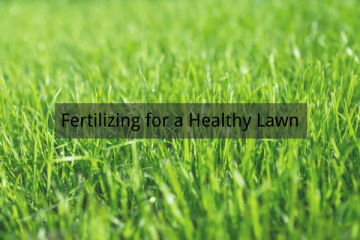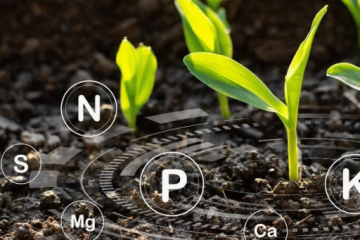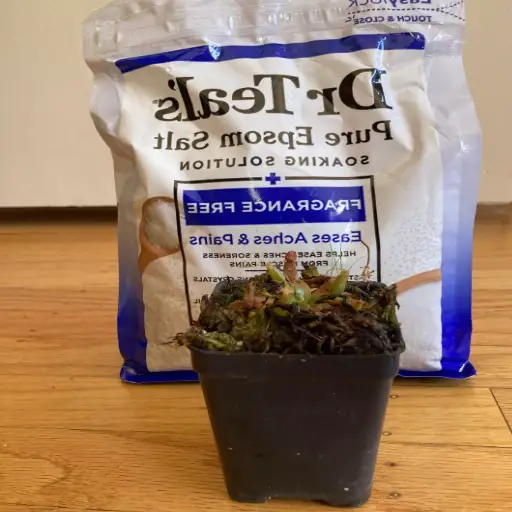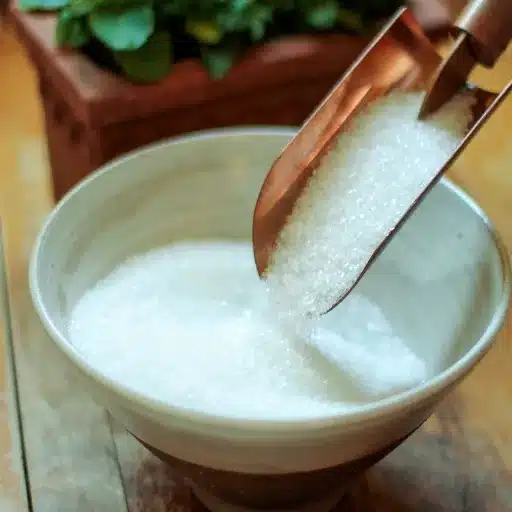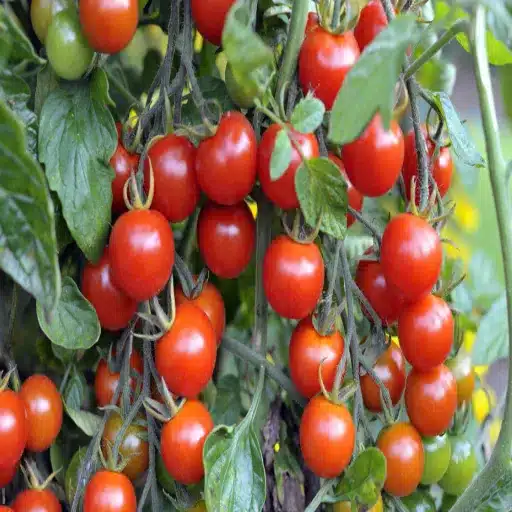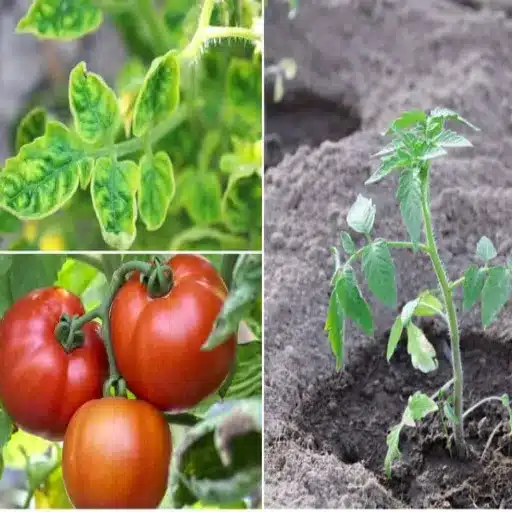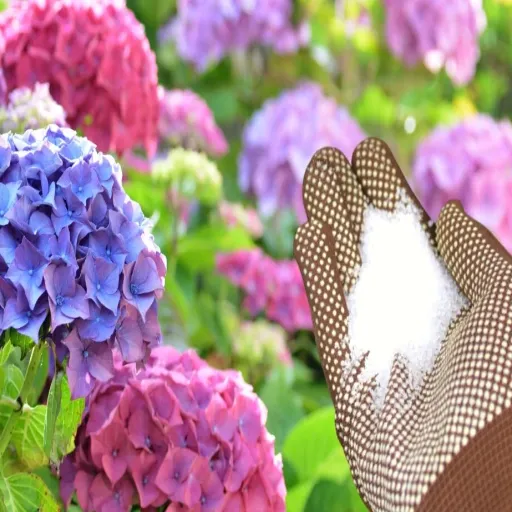Gardening enthusiasts and agricultural professionals alike are constantly seeking sustainable methods to enhance plant health and yields. One often-overlooked yet highly effective solution is the use of Epsom salt as a natural fertilizer. Specifically, Dr. Teal’s Epsom Salt offers a simple and affordable way to boost plant growth, improve nutrient absorption, and promote lush, vibrant greenery. This guide explores the benefits of incorporating Epsom salt into your gardening routine, providing a detailed breakdown of its chemical properties, practical application methods, and the science behind its effectiveness.
Can You Use Dr. Teal’s Epsom Salt on Plants?
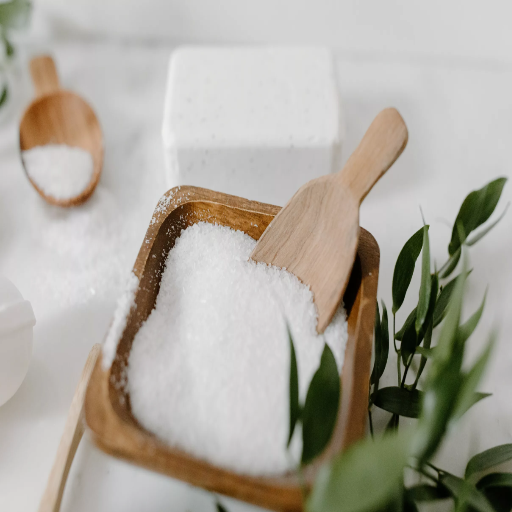
Understanding Dr. Teal’s vs. Pure Epsom Salt for Plants
Both Dr. Teal’s Epsom Salt and pure Epsom salt contain the same active ingredient; magnesium sulfate (MgSO₄) is the centerpiece for both products. Both salts are beneficial for plants since magnesium, which is a main ingredient in the photosynthesis process and sulfur which is crucial in enzymatic activities and protein synthesis, is present in both products.
Unlike Dr. Teal’s products, pure Epsom salt is marketed as an agricultural product, which means it is untouched and meant for gardening specifically. It does not contain extra ingredients such as fragrances or oils that could lead to contamination of the plant or soil ecosystems. Dr. Teal’s Epsom Salt is predominantly sold for personal care, which is a stark difference from their pure Epsom salt. Although still containing magnesium sulfate, some of Dr. Teal’s variations may have additional elements like essential oils or scents, which are not ideal for soil or plant life.
When choosing Epsom salt for gardening, checking the product’s label for non-plant-safe fillers is necessary. As long as the formulation is unsullied, the effectiveness of the Epsom salt in providing magnesium and sulfur to the soil will be identical across both products. If you are concerned about achieving absolute accuracy and precision, using pure Epsom salt formulated for horticultural use will be best, especially for delicate crops. Using the correct product permits the protection of your plants while augmenting the advantages of such an inexpensive amendment to the soil.
Potential Benefits and Risks for Plant Growth
Magnesium sulfate, commonly referred to as Epsom salt, is widely regarded as a beneficial additive for plant growth under specific conditions. It provides an effective source of magnesium (Mg) and sulfur (S), essential macronutrients required for a variety of physiological processes in plants. Magnesium plays a critical role in chlorophyll production, which directly impacts photosynthetic efficiency, while sulfur contributes to protein synthesis and enzyme function. The application of magnesium sulfate has been observed to enhance leaf greenness, improve nutrient uptake, and support robust flowering and fruiting.
However, potential risks arise when its application is not tailored to actual plant requirements. Over-application can lead to soil imbalances, where excessive levels of magnesium may interfere with the availability of calcium or potassium, resulting in deficiencies of these nutrients. Additionally, repeated or unnecessary use of magnesium sulfate could increase soil salinity, impacting root health and overall plant vitality. Thus, soil analysis and plant tissue testing are recommended to determine the need for supplementation and to mitigate unintended consequences.
Maintaining a balanced nutrient application strategy is crucial. Proper dosing according to species-specific requirements and monitoring environmental factors such as soil type, pH, and existing nutrient levels will optimize the efficacy of magnesium sulfate while minimizing adverse effects. When integrated responsibly, magnesium sulfate can serve as a critical component in modern horticultural and agricultural practices.
How to Use Epsom Salt as a Plant Fertilizer

Proper Epsom Salt Dosage: Tablespoon Per Gallon Ratio
As a rule, the concentration of Epsom salt (magnesium sulfate) for plants depends on the type of plant and its growth stage. For most houseplants and garden plants, a standard recommendation is to dissolve 1-2 tablespoons per gallon of water. This concentration works well for most houseplants and garden plants since it provides an easily absorbable boost of magnesium which aids in improving chlorophyll production and plant vigor.
More specialized applications, such as with tomato plants or roses, may have differing dosage amounts. For tomato plants, applying 1 tablespoon of Epsom salt per gallon of water every other week during their active growth season could be beneficial. In the case of roses, they may require a higher dose of 1.5 tablespoons per gallon, applied as a foliar spray or soil drench during the blooming phases to enhance flower production. Roses are also susceptible to the over-application of calcium and may suffer from stunted growth due to a deficiency of other critical nutrients.
It’s prudent, however, to warn that application of magnesium sulfate must be done with caution due to its ability to disrupt the delicate balance of other essential nutrients needed in the soil. Use legal soil testing before administering is always recommended alongside the soils existing magnesium levels. This along with the soil pH, calcium availability, and specific requirements of the plant ensures effective nutrient management.
Application Methods: Soil Drench vs. Foliar Spray
When using Epsom salt as a fertilizer, the application method of soil drenching and foliar spraying differs with regards to the specific nutrient need of the plant, as well as the urgency in which magnesium and sulfur need to be delivered.
- Soil Drench: In this approach, Epsom salt is dissolved in water, and the resulting solution is applied to the soil at the root zone. Magnesium and sulfur can be taken up by the plant roots over time, facilitated by the movement of the soil solution. Soil drenching is particularly effective for long-term supplementation as it provides a steady correction of magnesium deficiency in the soil and ensures a reasonable level of plant uptake. A common recommendation is to dissolve 1-2 tablespoons of Epsom salt in a gallon of water, although the dosage may be modified depending on soil test results and plant needs.
- Foliar Application: Applying nutrients through the leaves helps bypass the slower absorption through roots and provides prompt results. It is best used when magnesium deficiency is noted with poor growth or yellowing leaves (chlorosis). Foliar sprays need more dilution than other methods; usually 1-2 teaspoons of Epsom salt per gallon of water, to prevent burning the leaves. Best practices include spraying during the days’ cooler parts and making sure the undersides of leaves which contain most, if not all, of the stomata are also covered.
Schools of thought recognize that each method has unique benefits, and a more tailored approach based on the environmental factors, growth stage, and urgency of the nutrient deficiency is ideal to follow. Covering all bases ensures a monitored balance that isn’t dangerously close to the extreme case of overuse without the risk of undermining supplementation.
How Often to Apply Epsom Salt to Plants
The rates at which Epsom salt is administered to different plants is dependent on the species of that plant, its growth stage, and its particular nutritional requirements. Generally, for most plants, the monthly application of Epsom salt during the period of growth is enough to ensure that sulfur and magnesium levels are sustained. Foliage veggies, for instance, are supplied with a monthly foliar feeding of 1 tablespoon of Epsom per gallon of water due to the expedited absorption through the leaves.
Epsom salt should be applied biweekly to bloom-producing and yielding crops like tomatoes and pepper to increase the rate of flower and fruit yield. Applying one tablespoon of Epsom salt granules directly to the soil surface at the base of the plant is a way to offer prolonged slow-release effects. Targeted root uptake of Epsom salt will be equally effective if the salt is dissolved in water and applied as a drench.
In the case of lawn care, better results will be achieved if Epsom salt is spread in the range of one to two pounds per 1,250 square feet of land every four to six weeks for green even growth. Soil pH, rainfall, and neglected specific deficiencies of the plant will, however, affect this schedule and need to be considered in these conditions. Prior testing of the soil is paramount due to possible excess magnesium accumulation disrupting nutrient balance, which could harm plant health in the long run.
The Science Behind Epsom Salt for Plants
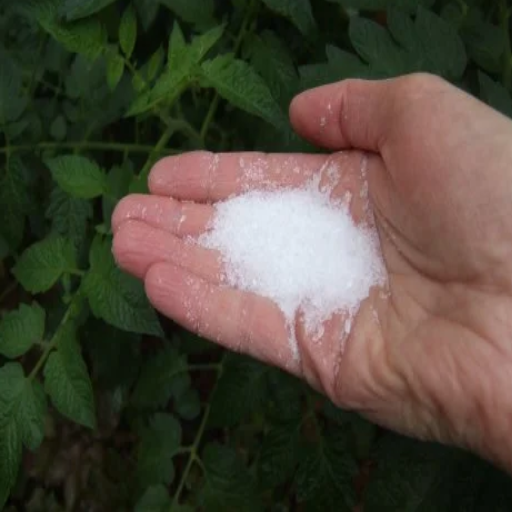
How Magnesium and Sulfur Support Photosynthesis
Being a primary component of chlorophyll molecules, magnesium is essential in photosynthesis as plants absorb energy from the sun’s light. In plants, magnesium is critical for the formation of chlorophyll. If a plant is magnesium-deficient, the synthesis of chlorophyll molecules will be impaired, reducing the photosynthetic efficacy and often resulting in a condition termed chlorosis, whereby leaves become yellow because of subdued production of chlorophyll. Furthermore, magnesium serves as a cofactor in many cyanide-sensitive enzymatic reactions in carbohydrate metabolism, which aids in the energy transfer within the plant body.
Cysteine and methionine are key sulfur-containing two-sulfur amino acids, and sulfur is the basis of constructing these essential amino acids. Moreover, the proteins that constitute plant tissue, known as structural proteins, are fundamental for structural development. Along with these, the proteins directly linked to biochemical activities, including proteins of chloroplasts, which markedly affect the rate of photosynthesis, are also crucial. Sulfur also helps in the formation of coenzymes and vitamins like biotin and its precursor thiamine, which assist in photosynthetic and metabolic reactions and pathways.
Plants can profoundly enhance chlorophyll levels, improve activation of enzymes and effective growth when magnesium and sulfur ratios are maintained. Optimizing plant growth and achieving the desired vigor, maximum efficiency in photosynthesis is achieved when proper management of nutrients according to the specific garden’s needs guides via soil testing to ascertain what supplements are necessary in terms of magnesium and sulfur.
When Plants Need Additional Magnesium
The lack of magnesium in plants can be seen with several distinct and observable symptoms because of its importance in chlorophyll pigments formation and enzyme catalysis. One of the earliest signs of magnesium deficiency noted is interveinal chlorosis, which is an ailment in which the veins of a leaf are still green, but the parts in between are yellow. This typically occurs in older leaves first, which get yellowed because magnesium is a mobile nutrient and it gets shifted in the plant to aid aspiring growth stagnates. Moreover, Interveinal chlorosis can also be noted along with leaf curling and premature shedding of the leaves. Further advanced exhibition of this problem is described as a lack of vigor as well as diminished efficiency in photosynthesis, in turn causing stunted cistern growth and ultimately low yield.
Apart from visual indicators, magnesium shortage can also be discovered from quality measurements of water and soil. Magnesium deficiency is aggravated with the presence of acidic sandy soils forming a cell scarcity. High concentrations of calcium, potassium, ammonium salts of weak acids will result in opposing cationic groups which will slow down the absorption of magnesium through the soil which in turn would interfere its uptake.
To correct magnesium deficiencies, it is necessary to utilize specific supplementation and detailed nutrient management techniques. Most known practices include using magnesium sulfate (Epsom salt), which readily dissolves in water, for foliar spraying and soil drenching, as well as dolomitic lime, which ameliorates acidic soils while increasing magnesium content. Magnesium supplementation, like other nutrients, is essential to balance, as excessive amounts can disrupt the balance of other nutrients and be detrimental. Balanced supplementation during various growth stages of MAG-bearing crops like tomatoes, peppers, and leafy greens ensures healthy physiological functions within the plant while sustaining robust growth and productivity.
Proper Application Techniques for Epsom Salt

Adding Epsom Salt Around the Base of Plants
Applying Epsom salt around the base of plants effectively requires proper timing and measurement to derive the maximum benefit while mitigating any negative effects. Epsom salt, chemically magnesium sulfate, provides readily available magnesium and sulfur, which are important for the growth of plants. For garden plants, it is generally recommended that Epsom salt be applied at a rate of one to two tablespoons per square foot of soil within the parameters of the plant base. Application should take place during the active growth phase of the plant when there is an increased need for magnesium, such as the flowering or fruiting stages.
In order to achieve the maximum possible salt absorption rate, the planting area should be moist. Salt dissolution is aided by watering the area post application allowing nutrient infusion into the root zone. In the case of plants with a higher magnesium sensitivity like tomatoes and peppers, it is best to make this application every four to six weeks within the active growth phase.
It should be mentioned that overapplication can cause an imbalance in the soil nutrients and the absorption of other vital nutrients like calcium and potassium. Concerning the application rates, as well as the possibility of nutrient overdose, periodic testing to ascertain magnesium levels can help optimize application rates. Also, for enhanced results regarding plant health and productivity, taking into consideration specific crop needs, soil conditions and incorporating Epsom salt as part of a comprehensive nutrient management plan would be most effective.
Creating and Using an Epsom Salt Solution
To formulate an Epsom salt solution for maximum effectiveness, appropriate ratios and methods of dilution should be followed. For most agricultural purposes, it is best to dissolve 1 to 2 tablespoons (15 to 30 grams) of Epsom salt in one gallon (3.8 liters) of water. This concentration is mostly applicable for foliar sprays, which enable the rapid transmittance of magnesium and sulfur to plant tissues through the leaves. A complete mixing of the salts should be carried out because a lack of mixing would lead to a concentration gradient in the solution would create uneven application and potentially injure the plants.
Considering crop needs and soil test outcomes, the incorporation of Epsom salt solutions into soil-based applications can have various rates of dilution. Generally, for every 100 square feet (9.3 square meters) of soil, 1 to 2 pounds (0.45 to 0.9 kilograms) of Epsom salt is added at planting time or as a top-dressing. This practice not only gives an immediate nutrient boost but also gradually helps to mitigate magnesium deficiency in the soil.
In order to achieve maximal results, solutions should be applied early in the morning or late in the afternoon when sunlight is less intense, cutting down on evaporation and dramatically reducing the risk of plant tissue damage. Additionally, reapplication frequency is recommended to align with the growth cycles of the plant; generally, this is every four to six weeks. However, constant monitoring is essential to avoid excess nutrient saturation.
Measuring One Tablespoon to One Cup Per Application
Measurement of resources versus plants’ requirements, encompassing factors such as salts, must also consider the level of precision, as too little or too much can result in negative implications, for example, nutrient burn, unbalanced soil, or insufficient nutrient absorption. One tablespoon to one cup per application is a broad suggestion, as depending on the type of solution being used, the plant’s size and age, as well as the composition of the soil can considerably modify the dose. A small plant requires around one tablespoon to sustain its growth and ease its fatigue while overloading the roots zone. When accommodating bigger plants, one must add a cup to achieve adequate soil coverage for nutrients.
Plant growth near an optimum – avoid accentuated deficiencies or uneven growth due to improper solution application. Following the manufacturer’s instructions, add the necessary solvent to the container and mix with water to dilute the final concentration for applying the solution. Concentrated liquid fertilizers are indeed a challenging base to work with; however, when divided, they are easier to manage. When preparing the fertilizers for precision and uniformity, volumetric devices like graduated cylinders or measuring spoons for the kitchen work best, especially if one plans on scaling for bigger gardens and open agricultural fields.
Soil permeability, as well as climate conditions, directly influence the amount of water needed. Soils that drain quickly tend to be highly permeable, which may even require higher volumes to ensure nutrient retention. In contrast, lower clay soils tend to require less water to avoid nutrient runoff. In any case, matching application volume with plant needs and soil-determined environmental parameters enhances nutrient application and the balanced, healthy growth of plants. Periodic soil testing also helps understand the nutrient value in the soil, which allows fine-tuning of application volume gradually over time.
Common Mistakes When Using Epsom Salt on Plants

Using Too Much Epsom Salt: Signs of Overuse
Excessive use of Epsom salt on plants can lead to several key issues that disrupt the soil’s chemical balance and harm plant health. One of the most notable signs is magnesium toxicity, which may manifest as leaf discoloration, particularly yellowing between the veins (interveinal chlorosis). This condition occurs when high magnesium levels interfere with the uptake of essential nutrients such as calcium and potassium.
Overuse may also result in an accumulation of soluble salts in the soil, which can reduce water absorption by plant roots and lead to dehydration. Additionally, excessive magnesium can alter soil pH, making the environment unsuitable for certain plants and microorganisms. This, in turn, diminishes soil fertility over time.
Specific indicators of overapplication can include visible leaf curling, stunted growth, or weak stems. For crops, the yield may decrease due to nutrient imbalance. It is crucial to monitor plant health closely and conduct soil testing to ensure that magnesium levels remain within the optimal range.
Mixing Epsom Salt with Other Fertilizers
Understanding the synergistic and antagonistic relationships in soil is important when mixing Epsom salt with other fertilizers to manage soil interactions. Epsom salt, which is mostly magnesium sulfate, can be favorable for nitrogen fertilizers because it helps with magnesium issues without significantly altering the NPK ratios. But, when used with potassium or calcium rich fertilizers, heavy caution must be taken because too much of these nutrients can disrupt the plants use of magnesium.
- Conduct Soil Testing: Research the area strategically to identify competing nutrients that exist within the bounds of magnesium and cause minimal nutrient competition. After this, applying Epsom salt proves to be the most useful magnesium supplement.
- Mixing Rations: As with every crop, Epsom salt needs to be seasoned specially with brine to match the growers individual needs. As for volume, 1 to 2 tablespoons per gallon of water are suggested for foliar sprays, and one cup per 100 square feet for soil applications.
- Application Frequency: The most impactful moments to apply magnesium are during crucial growth periods prone to flowering or fruiting. Also, why do staggering applications alongside nitrogen-rich fertilizers promptly prevent nutrient leaching and boost efficiency?
- Avoid Mixing with Alkaline Fertilizers: Substances that have a high pH like lime can lower the effectiveness of magnesium sulfate’s solubility. To avoid this, such products should be applied at different times to optimize the nutrients’ accessibility.
These instructions allow Epsom salt to be blended with other fertilizers without negative interactions and improve both plant health and soil nutrient dynamics.
When Not to Use Epsom Salt on Plants
Often praised for its magnesium and sulfur contents for aiding plant growth, Epsom salt does come with some caveats. For example, overapplication of Epsom salt may lead to a magnesium excess in the soil, hindering the plants ability to absorb calcium and potassium leading to mineral deficiency. This disrupts the delicate balance of nutrients needed for optimal growth.
Moreover, certain types of plants that have naturally evolved to live in low magnesium surroundings, e.g. sandy soils, might not gain anything from added magnesium. To avoid overdoing it, conducting a soil test prior to applying is crucial. Moreover, there is no need for using Epsom salt on plants that already get adequate supply of magnesium from other fertilizers or amendments made to the soil.
Do not treat Epsom salt as a universal remedy for every deficiency and use it indiscriminately. For example, the yellowing of leaves could result from nitrogen deficiency or even iron chlorosis, which has nothing to do with a lack of magnesium. In such scenarios, applying Epsom salt could worsen the problem by adding more salts, potentially causing poor drainage and salinity issues as time goes on. Epsom salt can be useful—including magnesium and sulfur—but best used when proper diagnosis and soil testing are done to confirm their effectiveness.
References
Frequently Asked Questions (FAQs)
Q: How does Epsom salt work as a natural fertilizer for plants?
A: Epsom salt (magnesium sulfate) works as a natural fertilizer by providing two essential nutrients that plants need: magnesium and sulfur. Magnesium is crucial for chlorophyll production and helps with the uptake of other nutrients like nitrogen and phosphorus. When plants are deficient in magnesium, you’ll notice yellowing leaves while veins stay green. Sulfur helps plants produce vitamins, amino acids, and enzymes. Unlike table salt, Epsom salt doesn’t harm plants when used correctly and can help your plants grow stronger and healthier.
Q: How much Epsom salt should I use for my garden soil?
A: For garden soil, add one tablespoon of Epsom salt per gallon of water, and use this solution to water your plants every four to six weeks. Alternatively, you can sprinkle dry Epsom salt directly around the base of plants (about 1 tablespoon per foot of plant height) before watering. For a vegetable garden, mix approximately two tablespoons of Epsom salt per gallon of water and apply during planting and then again when vegetables begin to flower or fruit. However, it’s always best to test your soil first to confirm a magnesium deficiency before application.
Q: Can Epsom salt be beneficial for indoor potted plants?
A: Yes, Epsom salt can be beneficial for indoor potted plants, especially those that tend to be heavy feeders like tomatoes, peppers, and roses. For house plants, dissolve one teaspoon of Epsom salt in one gallon of water and use this solution once a month as part of your regular watering routine. Potted plants often develop magnesium deficiencies because nutrients can leach out with repeated watering. Signs that your indoor plants might benefit from Epsom salt include yellowing leaves, stunted growth, and curling leaves.
Q: Will Epsom salt help with hydroponic gardening?
A: Absolutely! Hydroponic systems often seem to get magnesium deficiency since water-based growing doesn’t have the natural minerals found in soil. Adding Epsom salt to your nutrient solution can address this issue effectively. For hydroponics, use approximately 1-2 teaspoons of Epsom salt per gallon of water in your nutrient solution. However, be careful not to overdo it, as excessive magnesium can interfere with the uptake of other nutrients like calcium. Monitor your plants closely and adjust as needed.
Q: Can Epsom salt replace regular fertilizers that contain nitrogen and phosphorus?
A: No, Epsom salt cannot completely replace regular fertilizers that contain nitrogen and phosphorus. While Epsom salt provides magnesium and sulfur, plants also need other essential nutrients like nitrogen and phosphorus for complete health. Nitrogen is needed for leaf growth and creating chlorophyll, while phosphorus is crucial for root development, flowering, and fruiting. Epsom salt works best as a supplement to a complete fertilizing regimen. Consider using it alongside organic compost or balanced fertilizers to ensure your plants receive all necessary nutrients.
Q: How often should I apply Epsom salt to my plants?
A: For most garden plants, applying Epsom salt every 4-6 weeks during the growing season is sufficient. For potted plants, once a month is typically adequate. However, the frequency can vary depending on your specific plants and soil conditions. Plants like roses, tomatoes, and peppers may benefit from more frequent applications (every 2-3 weeks), while other plants may need less. It’s rather easy to use Epsom salt as a supplement, but always watch for signs of over-fertilization, such as leaf burn or wilting. If you’re growing plants this summer in magnesium-poor soil, a monthly application can make a significant difference in plant health.
Q: Are there any plants that particularly benefit from Epsom salt applications?
A: Yes, several plants particularly benefit from Epsom salt applications. Roses often respond dramatically with more vibrant blooms and greener foliage. Tomatoes and peppers frequently show improved fruit production when treated with Epsom salt. Magnesium-loving plants like ferns, palms, and camellias also show marked improvement. Epsom salt will help get past common growth issues in these plants, especially in soils lacking magnesium. Additionally, flowering plants like begonias and geraniums often produce more abundant blooms when Epsom salt is incorporated into their care routine.
Q: How can I tell if my plants need Epsom salt?
A: The most common sign that your plants may need Epsom salt is interveinal chlorosis—yellowing leaves while the veins remain green. Other indicators include stunted growth, curled leaves, and poor flower or fruit production despite adequate sunlight and water. Before applying Epsom salt, it’s advisable to test your soil to confirm a magnesium deficiency. Many garden centers sell simple soil test kits that can identify nutrient deficiencies. Remember that overuse of Epsom salt can create imbalances in your soil chemistry, so confirmation of a deficiency is important before beginning treatments.

